Test Bank For Pathophysiology: A Clinical Approach, Second edition: Carie A. Braun
$35.00
Test Bank For Pathophysiology: A Clinical Approach, Second edition: Carie A. Braun
You will receive this product immediate after placing the order
Pathophysiology: A Clinical Approach
Pathophysiology: A Clinical Approach Carie A. Braun
Pathophysiology: A Clinical Approach Carie A. Braun Second
Pathophysiology: A Clinical Approach Carie A. Braun Second Test Bank
Test Bank For Pathophysiology: A Clinical Approach, Second edition: Carie A. Braun Download
*** YOU ARE BUYING the Test Bank ***
Name: Pathophysiology: A Clinical Approach
Author: Carie A. Braun
Edition: Second
ISBN-10: 1605473049
ISBN-13: 978-1605473048
Type: Test Bank
– there’s a very high chance that you will see a very similar, if not exact the exact, question in the test!
–
–
If you have any questions, please feel free to contact us. Our response is the fastest. All questions will always be answered in 6 hours., most of the time within 30mins
We also faced similar difficulities when we were students, and we understand how you feel.
But now, with the Pathophysiology: A Clinical Approach Second Test Bank, you will be able to
* Anticipate the type of the questions that will appear in your exam.
* Reduces the hassle and stress of your student life.
* Improve your studying and also get a better grade!
* Get prepared for examination questions.
* Can save you time and help you understand the material.
This is the quality of service we are providing and we hope to be your helper.
Test Bank is accurate.
Prepare to receive your Pathophysiology: A Clinical Approach Second Test Bank in the next moment.
ISBN-10: 1605473049
ISBN-13: 978-1605473048
If you have any questions, or would like a receive a sample chapter before your purchase, please contact us at [email protected]
Pathophysiology: A Clinical Approach
Pathophysiology: A Clinical Approach Carie A. Braun
Pathophysiology: A Clinical Approach Carie A. Braun Second
Pathophysiology: A Clinical Approach Carie A. Braun Second Test Bank
Test Bank For Pathophysiology: A Clinical Approach, Second edition: Carie A. Braun Download
Chapter 01- Introduction to Pathophysiology
1. This is defined as the action or workings of various parts of the body and is altered in the presence of disease:
A) structure
B) pathophysiology
C) histology
D) function
2. Which of the following describes a branch of anatomy that deals with the minute structure of cells and tissues, which are discernible with a microscope?
A) pathology
B) histology
C) morphology
D) microbiology
3. Which of the following best describes the health-illness continuum?
A) It is a dynamic entity
B) It is based on objective data
C) It represents two exclusive categories
D) It is focused on physical well-being
4. Health is often equated with this concept:
A) homeostasis
B) disease
C) objectivity
D) an uneventful physical examination
5. This is defined as impairment of cell, tissue, organ, or system functioning:
A) illness
B) pathophysiology
C) disease
D) syndrome
6. You have just purchased a new bike helmet and wear this daily when you bike to school. What level of prevention are you demonstrating?
A) primary
B) secondary
C) tertiary
D) none of these
7. Your father is on a rehabilitation unit after a stroke, so that he can relearn how to perform his usual activities of daily living. What level of prevention is implemented here?
A) primary
B) secondary
C) tertiary
D) none of these
8. This term describes how a disease starts, progresses, and resolves:
A) etiology
B) pathophysiology
C) pathogenesis
D) idiopathogenicity
9. You are diagnosed with an illness and no one is sure of the cause. This condition would be termed:
A) idiopathic
B) iatrogenic
C) nosocomial
D) etiologic
10. Cardiovascular disease is a condition that has genetic and environmental influences. This type of condition is considered:
A) communicable
B) unpreventable
C) inherited
D) multifactorial
11. Which of the following is a major clinical manifestation of a myocardial infarction (heart attack) in men?
A) chest pain
B) fever
C) EKG
D) cardiac enzymes
12. This is a major mechanism for detecting asymptomatic disease:
A) eliciting the patient history
B) genetic screening
C) family pedigree
D) blood tests
13. You received a paper cut while turning the page in your textbook. Identify a local manifestation of that injury:
A) fever
B) pain
C) headache
D) infection
14. You have influenza. Identify a systemic manifestation of that condition:
A) fever
B) chest pain
C) cough
D) infection
15. Five-year survival rates are often applied to patients with cancer as an indication of this:
A) morbidity
B) prognosis
C) metastasis
D) remissions
16. Identify the two critical components to the text definition of pathophysiology.
17. How is pathophysiology differentiated from pathology?
18. Describe what caring for the person, and not the disease, means.
19. Distinguish iatrogenic from nosocomial.
20. Distinguish signs and symptoms.
21. Distinguish acute and chronic.
22. Distinguish remissions and exacerbations.
23. Differentiate incidence and prevalence.
24. What is the difference between epidemic, endemic, and pandemic?
25. Describe how the Human Genome Project can contribute to our understanding of human diversity and disease.
Answer Key
1. D
2. B
3. A
4. A
5. C
6. A
7. C
8. C
9. A
10. D
11. A
12. B
13. B
14. A
15. B
16. First, there is a reliance on the understanding of human physiology. A person must first understand how something works before grasping what occurs when something goes wrong. Second, the core of pathophysiology is based on functional changes in the body. This relates to how the body responds to unexpected or undesired changes.
17. Pathology is the study of the structural and functional changes in cells and tissues as a result of injury. Pathophysiology is basically a combination of pathology and physiology; that is, structural and functional changes at a cellular and tissue level that affect the entire body.
18. Caring for the person, and not the disease, means that the emphasis is on care of the person. This implies that people are not referred to by the name of their disease (i.e., the diabetic) and are seen as having meaningful lives outside of the health care setting.
19. Nosocomial illnesses are caused by exposure to the health care environment. Nosocomial is likened to the ill fortune of being in the wrong place at the wrong time. Iatrogenic illnesses are the inadvertent result of medical treatment. An example of an iatrogenic illness is the development of a urinary tract infection through the placement of a tube into the urinary bladder to treat urinary retention.
20. Signs are the observable or measurable expression of the altered health condition. For example, in herpes simplex (a cold sore), a sign would be raised clear fluid filled vesicles on the individual’s lip, or an oral temperature of 37.6°C or 99.6°F. The signs are often considered the “objective” manifestations that can be seen or measured by the health care professional. The symptoms are the indicators that are reported by the ill individual and are often considered the “subjective” manifestations. Symptoms of herpes may include tingling or discomfort at the local site of the vesicles or a feeling of lethargy or tiredness. These symptoms are difficult for the health care provider to observe or to measure.
21. Acute is usually abrupt in onset and last a few days to a few months. Chronic is often more insidious, or gradual in onset, and occur over a longer time period, generally 6 months or greater.
22. Remissions are symptom-free periods. Exacerbations are periods where symptoms flare and can be severe.
23. Incidence is the rate of occurrence of a health condition at any given time. Incidence is basically the probability that a condition will occur in a certain population. Prevalence is the percentage of a population that is affected by a particular disease at a given time.
24. A condition is endemic when the incidence and prevalence are stable and predictable. A dramatic increase in the incidence of a health condition in a population is termed epidemic, that is, above the endemic rate. When this epidemic spreads across continents the condition is considered pandemic.
25. The Human Genome Project has been instrumental in stimulating research interest in the area of human diversity and disease. Research is underway to determine the variability in DNA sequence patterns among populations in Africa, Asia, and the United States. These studies aim to identify “DNA regions” associated with complex diseases, such as cancer, diabetes, heart disease, and certain types of mental illness. These DNA regions will identify those that are more likely to develop these complex diseases based on their genetic structure. This will provide additional clues to the human factors that increase the risk and development of disease.

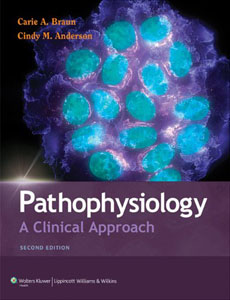
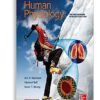


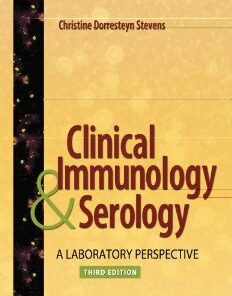


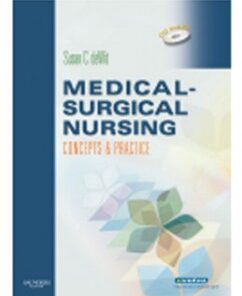


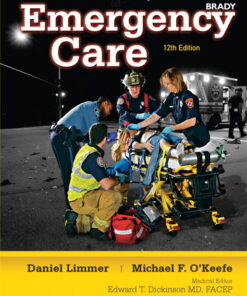
Reviews
There are no reviews yet.